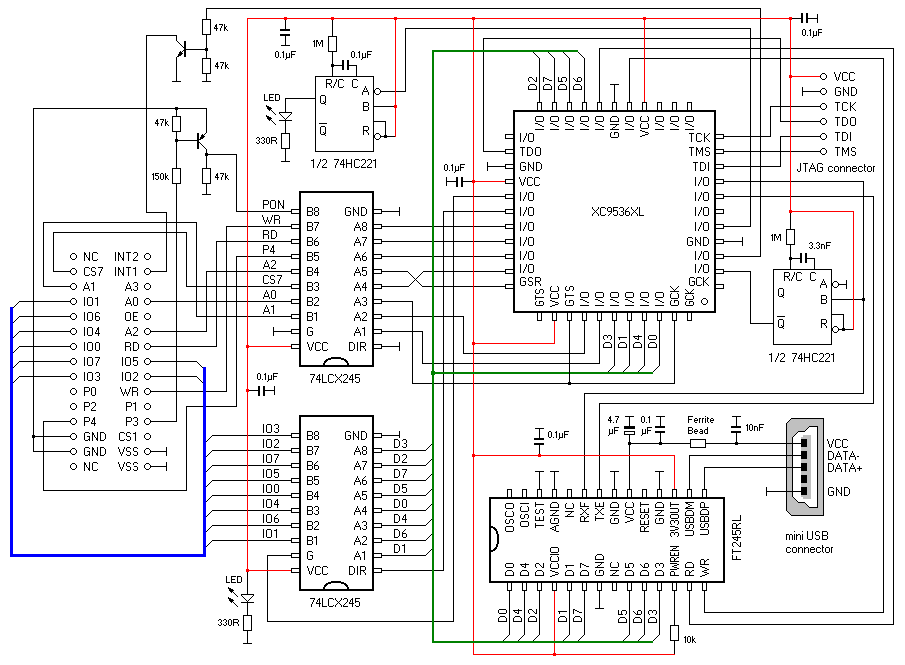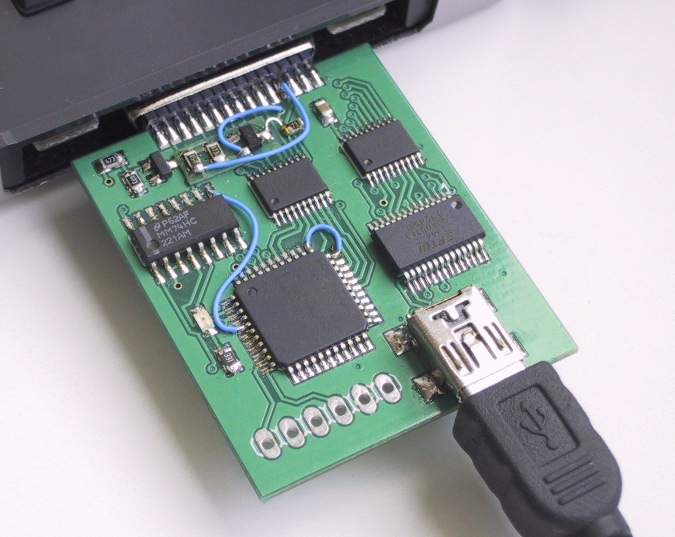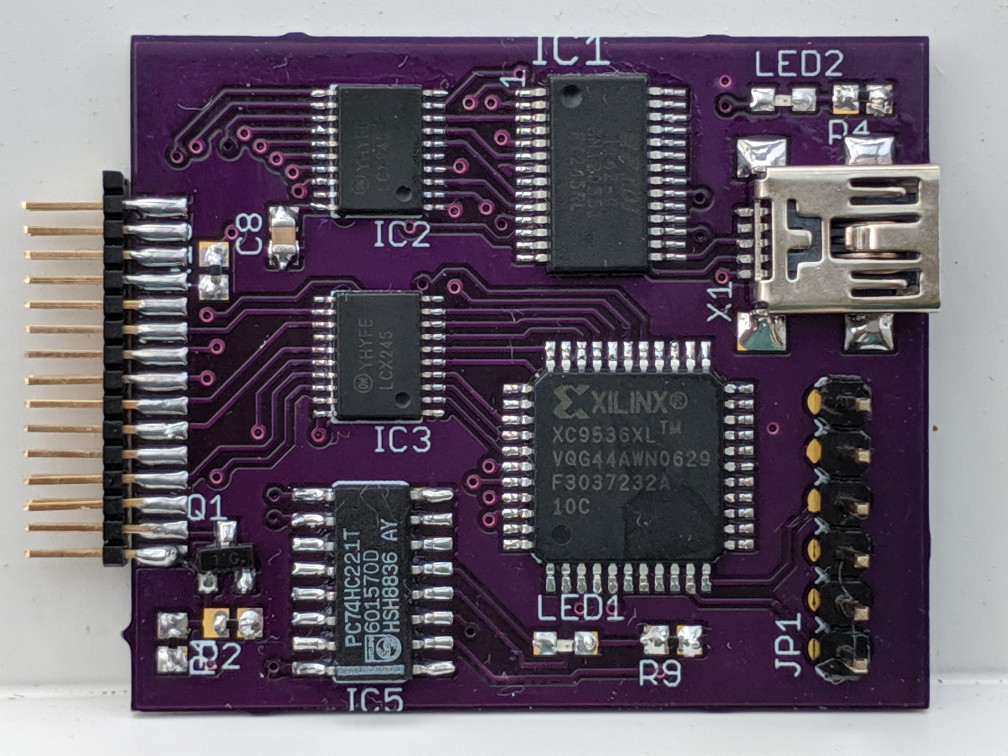| Index | wersja polska |
The presented device allows to transfer data between a PB-1000 or PB-2000C and a PC through the USB port. It supports the RS-232 and printer communication.

The current version of the USB interface operates without any data flow control because the PB microcomputers do not support hardware one when receiving. Instead it limits the receive speed to approximately 300 bytes per second with a monostable multivibrator inserting a delay of approximately 3.3ms between consecutive data ready requests.
The XON/XOFF protocol is not suitable either because of a 128-byte buffer inside the FTDI chip. Even if the PC stopped sending data, the PB microcomputer would still be overflown with remaining data in this buffer. The solution would be to move the XON/XOFF protocol handling to the Xilinx chip.

Contents of the archive usb100.zip:
The thickness of the board needs to be 0.8mm, because the 2x15 pin connector is mounted on its edge.

The settings of the baud rate, number of data and stop bits, parity control are meaningless. No flow control should be performed.
Recommended file descriptor string for the Casio microcomputer: "COM0:2,E,8,1,N,N,N,N,N"
The PC and Casio settings don't need to match.
Receiving files over the RS-232 port with the LOAD menu is limited to text mode only, because of the reserved 0x1A code (End of File character). Therefore, binary files need to be converted to some text format, for example with the PBF<->binary data converter.